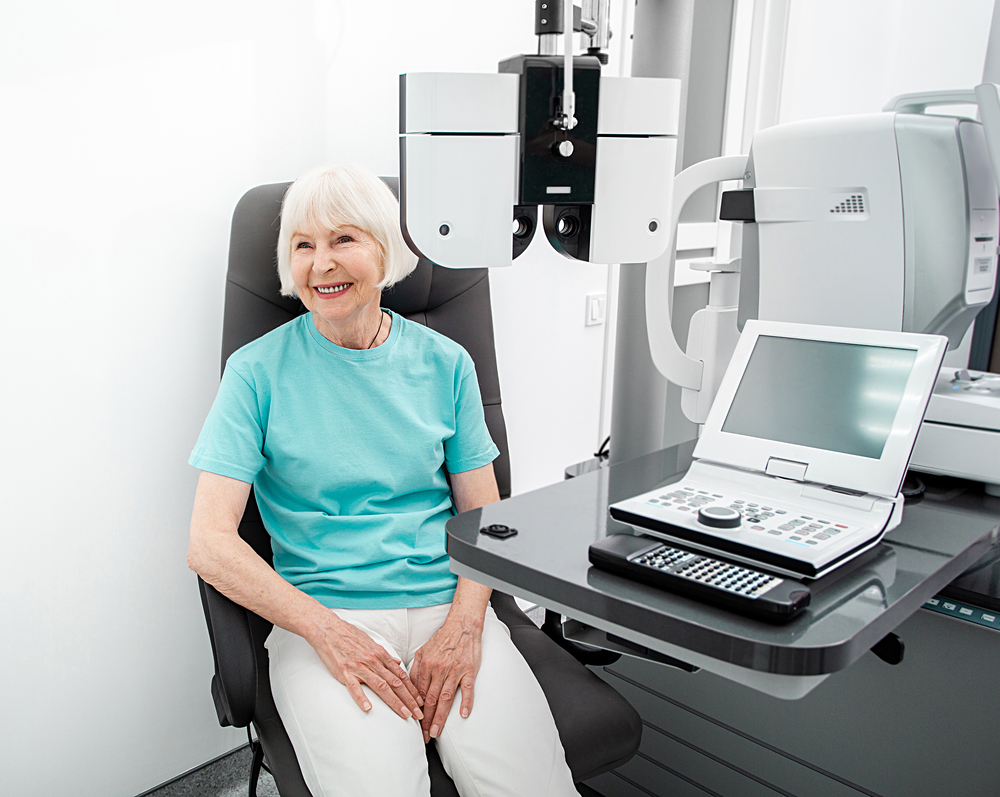Diagnosing and Treating Macular Degeneration

Any part of our body can be affected by illness or disease, including our eyes. There are many issues that can affect the health of our eyes, and by default, our eyesight. One of the most common is macular degeneration. Also known as AMD for short, this progressive eye condition may not result in total blindness, but it can significantly affect your eyesight, making even the simplest day-to-day tasks harder than they should be. This includes many activities that we take for granted, including reading, driving and even recognizing the people around us.
Types of Macular Degeneration
Many people are surprised to discover that AMD is not just AMD. There are actually two different types of this condition – ‘wet’ and ‘dry’.
Wet Macular Degeneration
Wet macular degeneration is the least common form of the condition and is caused by the growth of abnormal blood vessels in a part of the eye called the macula. These blood vessels can leak blood and fluid that affect vision. The symptoms of wet AMD appear very suddenly, and prompt treatment is needed to limit how much it affects your eyesight. Wet AMD is only ever a progression from dry AMD.
Dry Macular Degeneration
The majority of people diagnosed with macular degeneration are found to have the ‘dry’ variety – although the term is simply used to differentiate it from the ‘wet’ variety. This type of AMD occurs gradually over many years and is caused by the slow deterioration of the cells of the macula that happens with advancing age.
Diagnosing Macular Degeneration
Age-related macular degeneration affects the middle part of your vision rather than the edges and can affect either one eye or both eyes at the same time. People who develop AMD may experience any of the following symptoms of their condition:
Distortion or dark spots in the center of your vision
Objects appear smaller than normal
Lines that should be straight, such as lamp posts, seem wavy, bent, or distorted
Colors seem duller than they used to
Difficulty tolerating bright lights
Hallucinations
Difficulties in carrying out day to day activities due to vision problems, including watching television, reading, driving, or even recognizing faces
People generally don’t experience any discomfort or pain as a result of macular degeneration.
If you are experiencing any of the symptoms listed above, you should schedule an appointment with your eye doctor to discuss them. This appointment will form part of the diagnostic process and could involve a number of elements.
Diagnostic Testing for Macular Degeneration
Visual field testing. This test is used to check which areas of your vision are affected. The test uses something called an Amsler grid which is a grid of straight lines with a dot in the center, and you will be asked to identify areas of the grid that look blurred, wavy, or distorted.
Dilated eye exam. Special eye drops are used to dilate your pupils so that your eye doctor can look through them at the inside of your eyes. This will enable them to assess the condition of the macula, as well as look at the blood vessels that serve it, checking for any abnormalities.
OCT scanning. OCT stands for Optical Coherence Tomography and involves the use of cutting-edge technology to take detailed images of the back of your eye, including the retina and macula. The process is non-invasive, and instead, you simply stare into a lens while the machine takes the images.
Fluorescein angiography. A fluorescent dye is injected into your arm which travels through your veins to your blood vessels. This dye can be detected using a special camera which enables your eye doctor to visualize any leakage that is characteristic of wet AMD. This process can also be done using laser light reflection and an OCT machine, eliminating the need for dye.
Treating Macular Degeneration
Unfortunately, there isn’t currently a successful cure for dry macular degeneration. Instead, patients will be advised to use visual aids to support their vision. These can include better lighting, prescription lenses, magnifying glasses, screen readers, and more.
Some positive lifestyle changes, such as losing weight, stopping smoking, eating a healthy, nutritious diet, and protecting your eyes from the sun could also help slow its progression and maintain your vision for longer. Your eye doctor will be able to advise you on what steps you can take to limit the effect that AMD is having on your eyesight.
If are diagnosed with wet AMD, you will need urgent treatment to prevent any further vision loss. This involves being given a series of small injections that are placed directly into the eye. These target the abnormal blood vessels leaking into your eye, preventing any further growth. In some instances, laser light treatment is recommended to destroy leaking blood vessels too. Again, your eye doctor will be happy to provide you with more specific information.
For further advice on diagnosing and treating macular degeneration, visit Family Eye Care in Midlothian, TX. Call (972) 775-8000 today.






